A regional dish much more than a national, the paella is a historical dish, which has seen the day in the region of Valencia, more than 3 centuries ago.
The paella... Its sweet spicy effluves and its bright golden colors call to memories, to the nostalgia of the moments spent wandering in the Spanish markets.. If for most Europeans, the paella is an emblematic dish of Spain, for the Hispanics gives it is slightly more complex.
Today, we invite you to immerse yourself in the story that traces the origin of this mythical dish. A story full of history, through wars of territory, prohibition and conflicts of appropriation.
1. Rice, long before paella
If the seasoning and dosage of spices are no doubt indispensable for making a good paella, the main ingredient of the latter is obviously rice. The second largest producer and consumer of this starch in Europe – back to Italy – Spain has the oldest and most traditional rice fields ever active in the old continent, dating from the 8th century.
European import
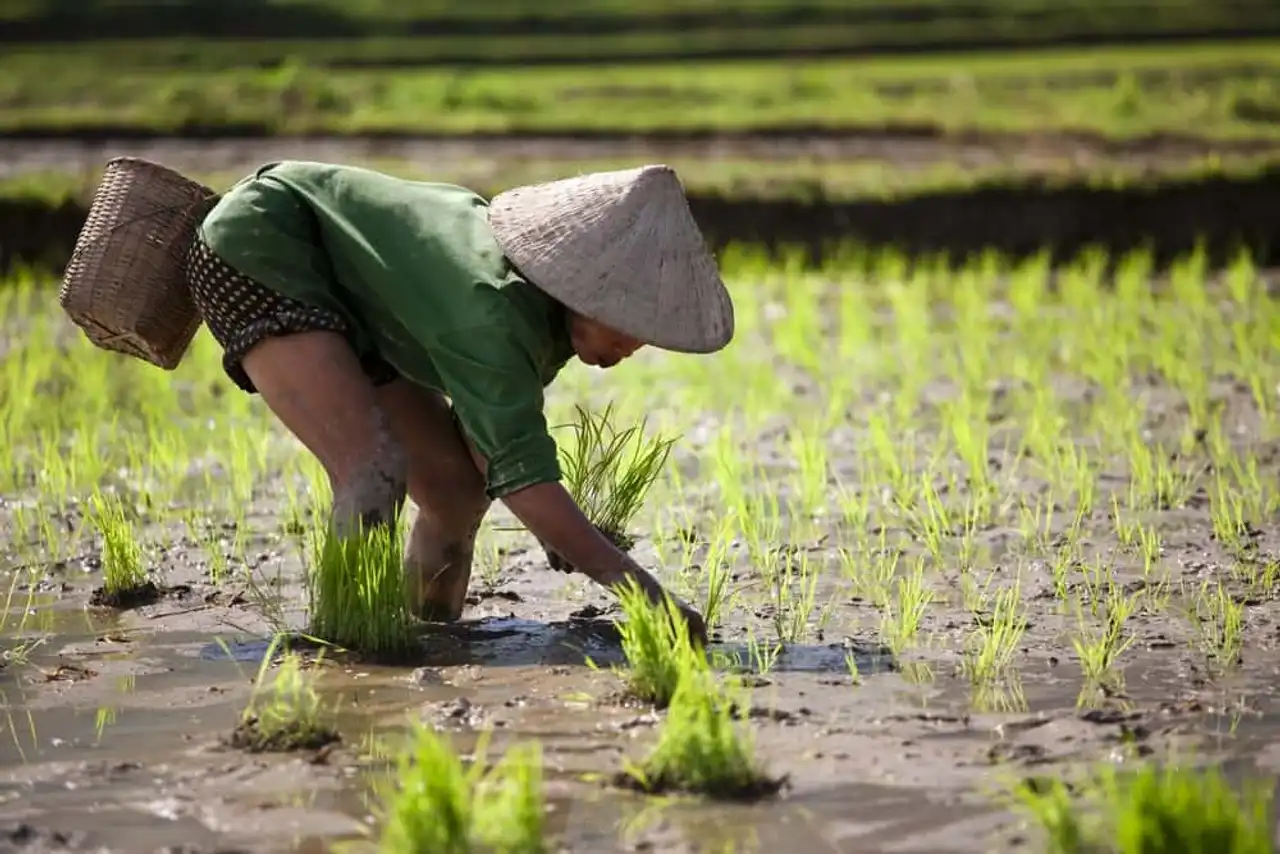
Photo credit: Shutterstock – beboy
But the history of rice and its culture began much earlier, 7,000 years ago, on Asian lands. First concentrated only in China and then in India, Vietnam and Thailand, it was finally in Greece that rice fields were exported. I mean, exported.
Because it is Alexander the Great which, marked by the benefits of rice during its conquest of the Asian continent, decides to bring it back to the Greek lands in order to start production there, copying the system of Asian rice fields.
So we are in 320 BC when the first rice crops are born in Europe.
The arrival of rice in Spain...
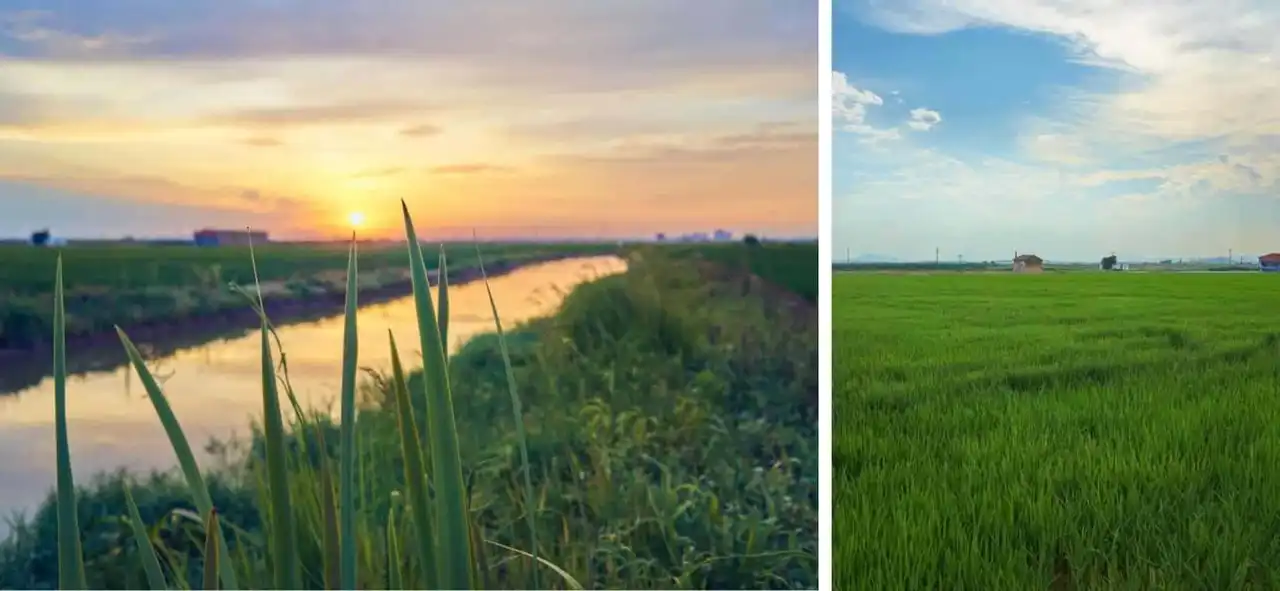
Photo credit: Shutterstock – Nedrofly
Over the centuries and from different empires, rice culture is also established in the Mediterranean and the Near East. However, it is necessary to wait until the 8th century, and Muslim Conquest of the Iberian Peninsula , so that the cultivation of rice settles in the Iberian Peninsula.
Everything then accelerates and rice cultivation becomes one of the main activities of the Valencienne region under the occupation of the Maures. Indeed, fleeing the internal wars of territories, many of Andalus come to settle in the community of Valencia, the land of a taifa kingdom promising the protection of its people.
An increase in the population then synonymous with a greater hand of work, and thus allowing to expand the agricultural production and economic power of the kingdom.
... until its prohibition!
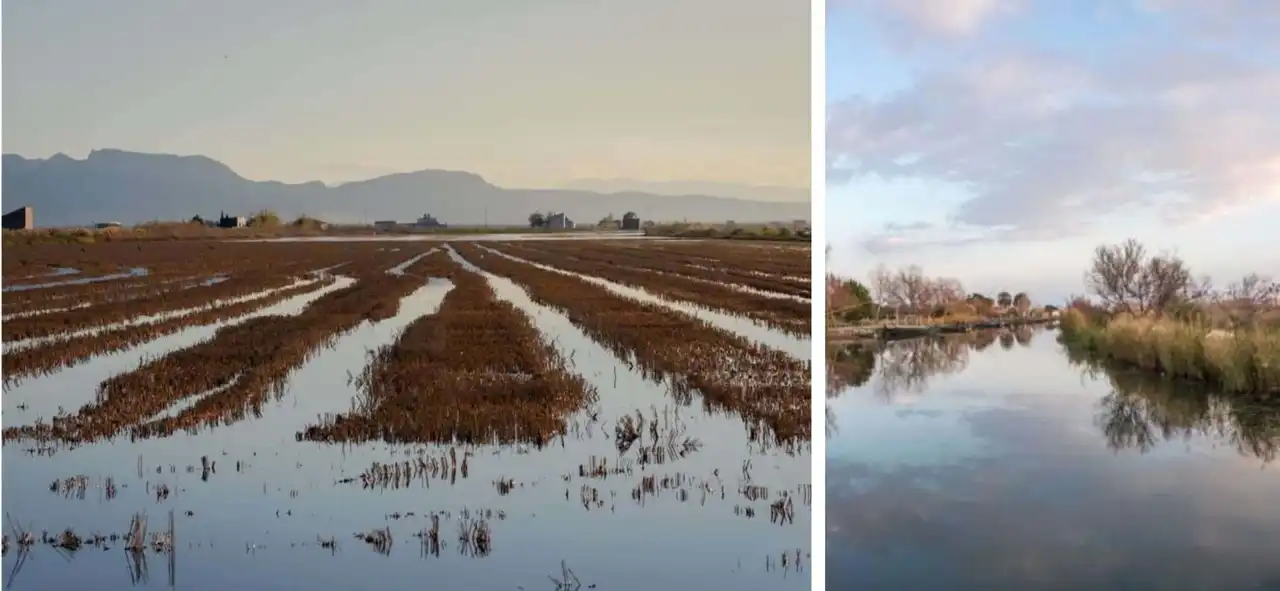
Photo credit: Shutterstock – Fernando.RM & Pumbastyle
This is how rice becomes one of the main Spanish agricultural activities, at least until the reconquest of Valencia in 1238. At that time, the Aragonese knights tried to maintain rice cultivation. Unfortunately, due to lack of knowledge of the product, they trigger a real scourge around the marsh zones regularly... Malaria!
Inundated with sick and unable to fight this disease, Spain falls into the torment. Decided to stop this epidemic, King Jaime I made a drastic decision, stating: “I recognize the so-called culture and have so much funestial consequences, I forbid the so-called culture in the city of Valencia and its surroundings. »
A prohibition imposed until the beginning of the sixteenth century, but which has never prevented Spain and the Valencienne region from continuing to increase its rice production.
It is also in Valencia that, two centuries later, the first (and only) version of the paella appears!
2. The paella, the only and the only
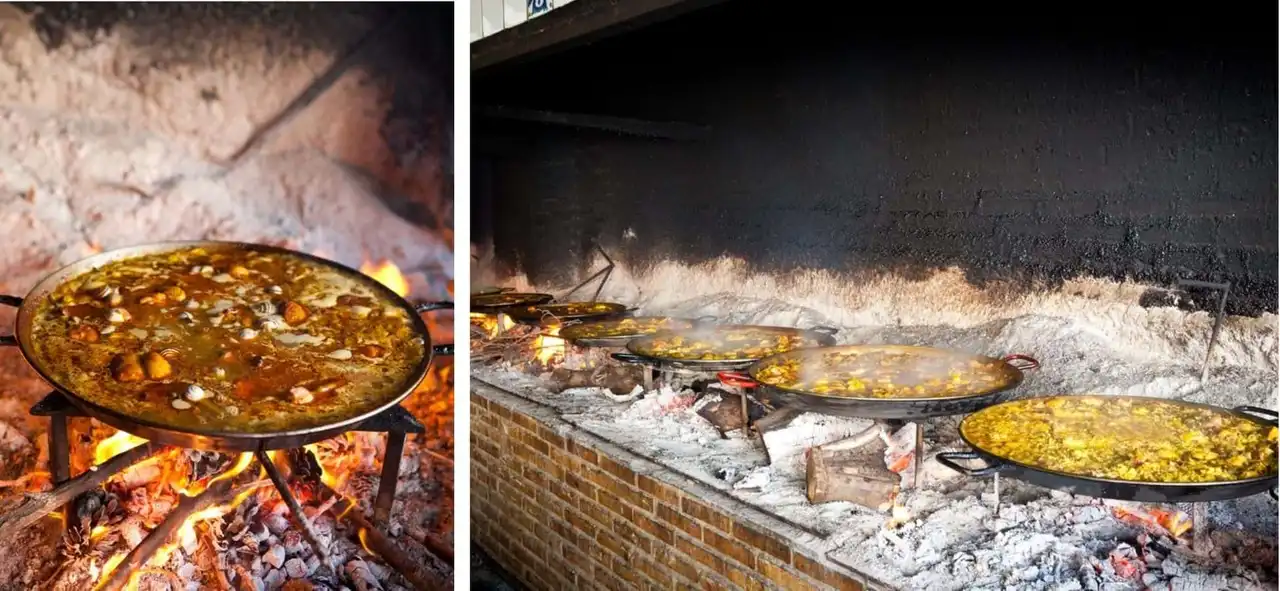
Photo credit: Shutterstock – David W Hughes
Shadow...
Our story continues, and now we have arrived in the eighteenth century, the " century of lights In Europe, the time of rebirth in Spain. The 17th century left traces, combining wars, diseases, poverty and abandonment of the territory to go to the conquest of Latin America.
The infertile lands and the agricultural productions left to abandon are at the origin of a gap, especially for the Valencien people. So, the rice, which has never stopped production, has become a tradition. And it is in this unfortunate certain that the first dishes cooked with rice see the day, still in the region of Valencia.
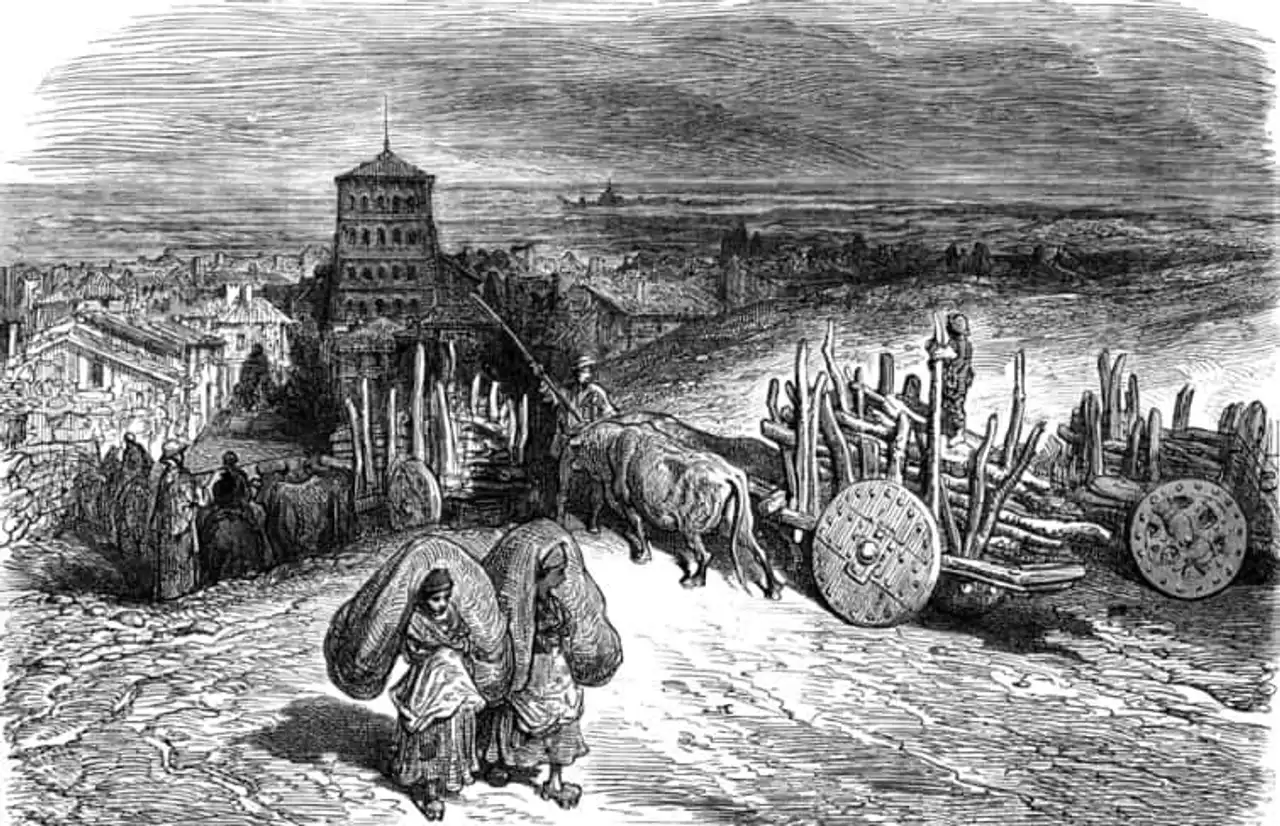
Photo credit: Shutterstock – Morphart Creation
The paella is close, very close... To cook this simple round rice spread at the bottom of a frying pan, the Valencian peasants go as simple as possible, and therefore essentially use what surrounds them: the vegetable garden and the bass-course.
So the ingredients are all found: chicken and rabbit for meat, accompanied by tomatoes, green beans and some white beans for vegetables (see even artichoke for some). All accompanied by rosemary leaves, peppers, and of course, saffron. Sometimes we add snail, a popular food at the time of Spanish farmers.
Nothing more. No seafood or fish, and even less pork. Paella Valenciana , the only and only recipe of paella still recognized to date is born. A rich dish, imagined and concocted by Valencian peasants, with the only ingredients they had at that troubled time.
...in the light!
Today obviously, the recipes of paella are diverse and varied, but none can claim to the name of Paella Valenciana (which is also a controlled label of origin). And if the ways of preparing it are more numerous, it is because very quickly, this peasant dish becomes one of the owls of the Spanish bourgeoisie.
Finish the large pans in which everyone eats directly to the spoon, chamailing even the « socarrat » , the "Croute of rice" that sticks to the bottom of the dish. From now on, the paella diversifies, serves on plates, with new ingredients. It takes the place of the simple saffron rice, whose bourgeois tables have so far been swept away.
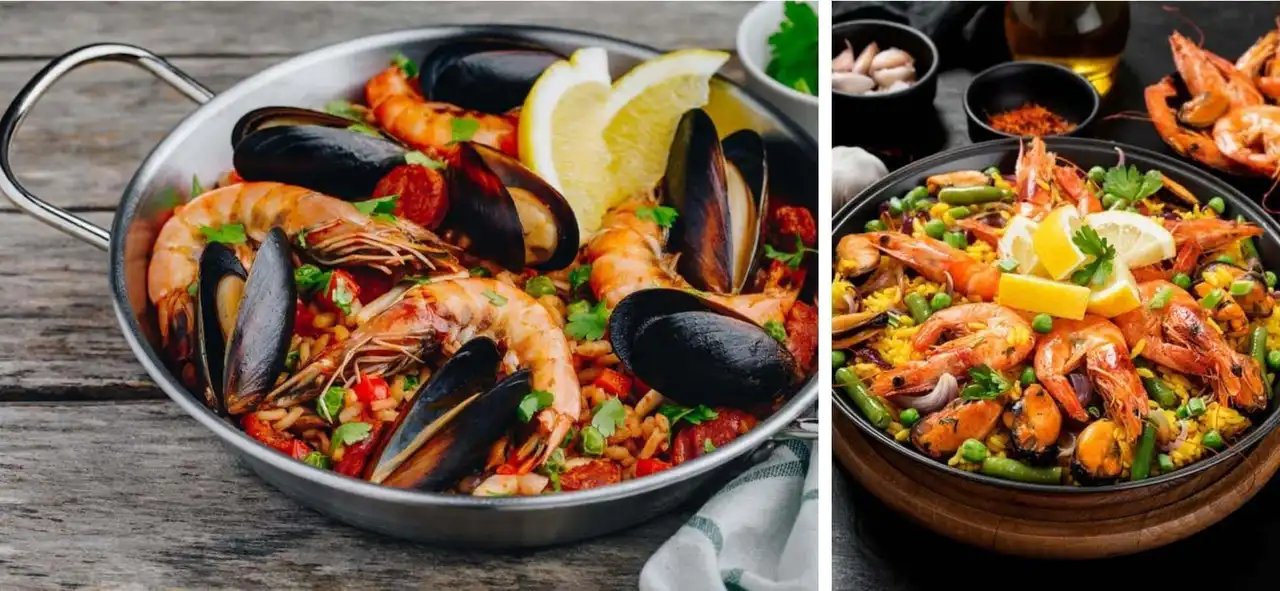
Photo credit: Shutterstock – Ekaterina Kondratova & nelea33
Thanks to its quasi-oriental flavours, it quickly wins the heart of Spanish, which make it a dish of parties. Prepared only on Sunday to enjoy it with family, it then becomes the mythical dish of Spanish religious holidays.
It is therefore at this time that we must paella as we know it today, make seafood (shrimps, mussels), fish and chorizo.
3. A war story...
Civil
In the world, paella is the symbol of Spanish food. But paradoxically... not in Spain! For the Hispanic people, it is clear that the paella remains a typical Valencian dish. However, the nationalized image that is actually done is not due to chance.
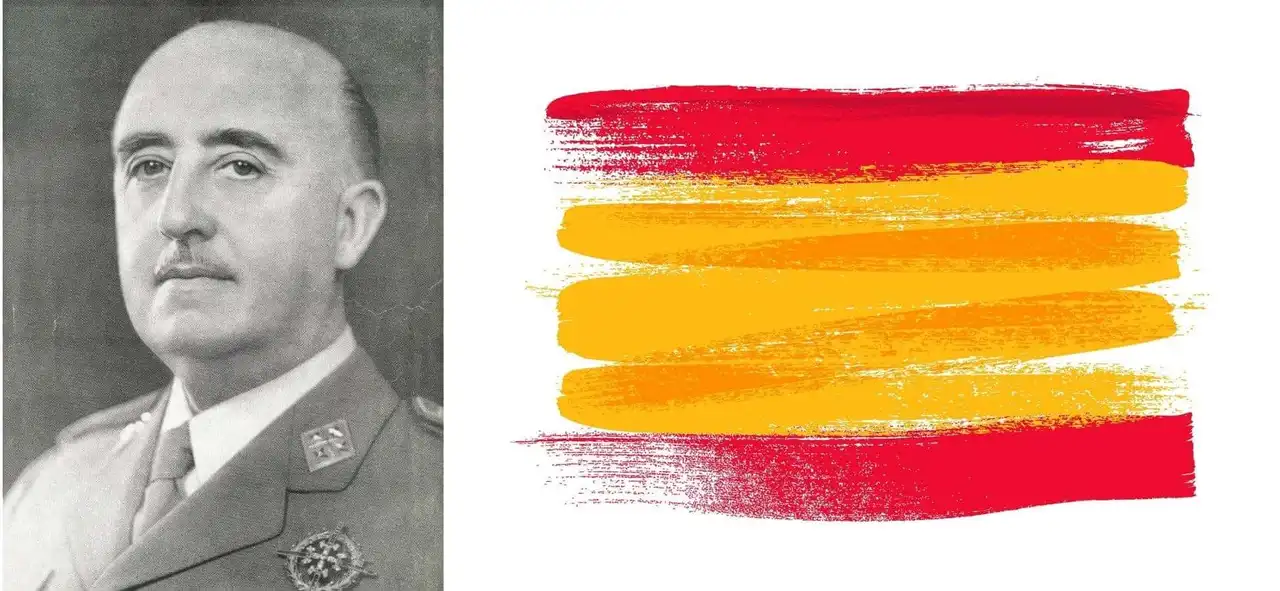
Photo credit: Shutterstock – Reamolko
It is Franco , which, after the Spanish civil war, decides that it is time for Spain to redouble its coat of arms and to increase the resources due to tourism. To do this, he must find his country an iconic dish. Enchanted by this preparation, which the whole of Spain is resilient, Franco quickly realizes that the paella is a time-consuming and easy-to-prepared piece of history, and especially that the colors of the paella also remind those of the Spanish flag: yellow and red.
Thus, he decided to proclaim it as the national dish of Spain.
of Independence
There is another story about the paella, a story about the appearances of tales, which still murmurs on the Spanish coast. The history of a French general and a Spanish peasant in the early 19th century, while the war of independence was full.
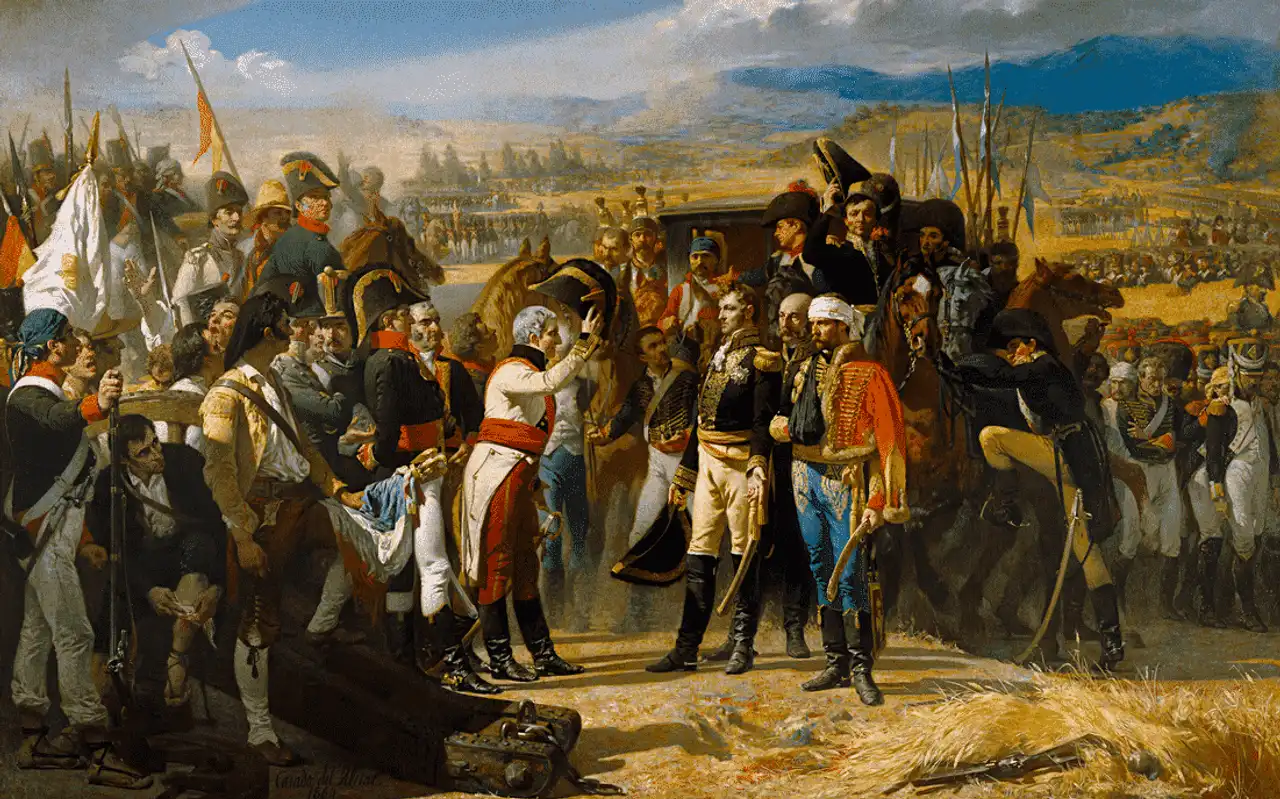
La rendicíon de Bailén – José Casado del Alisal
At the heart of a small Spanish village located in the region of Valencia and then occupied by the French army under the orders of Napoleon, a French general ordered a peasant woman to prepare her a good meal and her army. The woman, accustomed to cooking rice, prepares a large paella for all soldiers.
Under the charm of this dish with unknown flavours, the French general then makes a proposal to the young woman: for every different rice dishes she prepares, he will release a prisoner from his village. The young peasant, motivated by the idea of saving her loved ones, looks at the task, taking good care every day to change the recipe of her paella very slightly, removing an element here, adding another there.
According to legend, the young woman released no less than 176 prisoners alone...
Etymology
Finally, a final conflict surrounds the paella, the one concerning its etymology. For the latter, several hypotheses are mentioned: the word paella could come from Latin or Arabic.
Some, followers of the Latin language, will tell you that the word paella derives its name from the "paella", the small pan in which this dish was prepared during its creation.
Others, advocates of the Arabic language, argue that the paella came from the term “Baqiyah”, meaning “the remains”, because the paella was cooked by the peasants with the only ingredients that remained within their reach.
We chose to add one last hypothesis, more romantic... The one of a Spanish peasant who would have cooked this dish for the woman he was fond of, and to whom no one else but She could not taste. His preparation being therefore destined for the elue of his heart, he would have done so « para ella » -for her, thus giving birth to the contraction "paëlla"...
4. « Our » paella recipe
You will have understood that, if we were to follow the rules of "LA" paella, that originating from Valencia, we would not be able to share our recipe in any way. So, for this time, we decided to entrust you with the secrets of our editor's "family" recipe... A recipe transmitted from generation to generation, combining love and sun, sprinkled with a nice southwest accent.
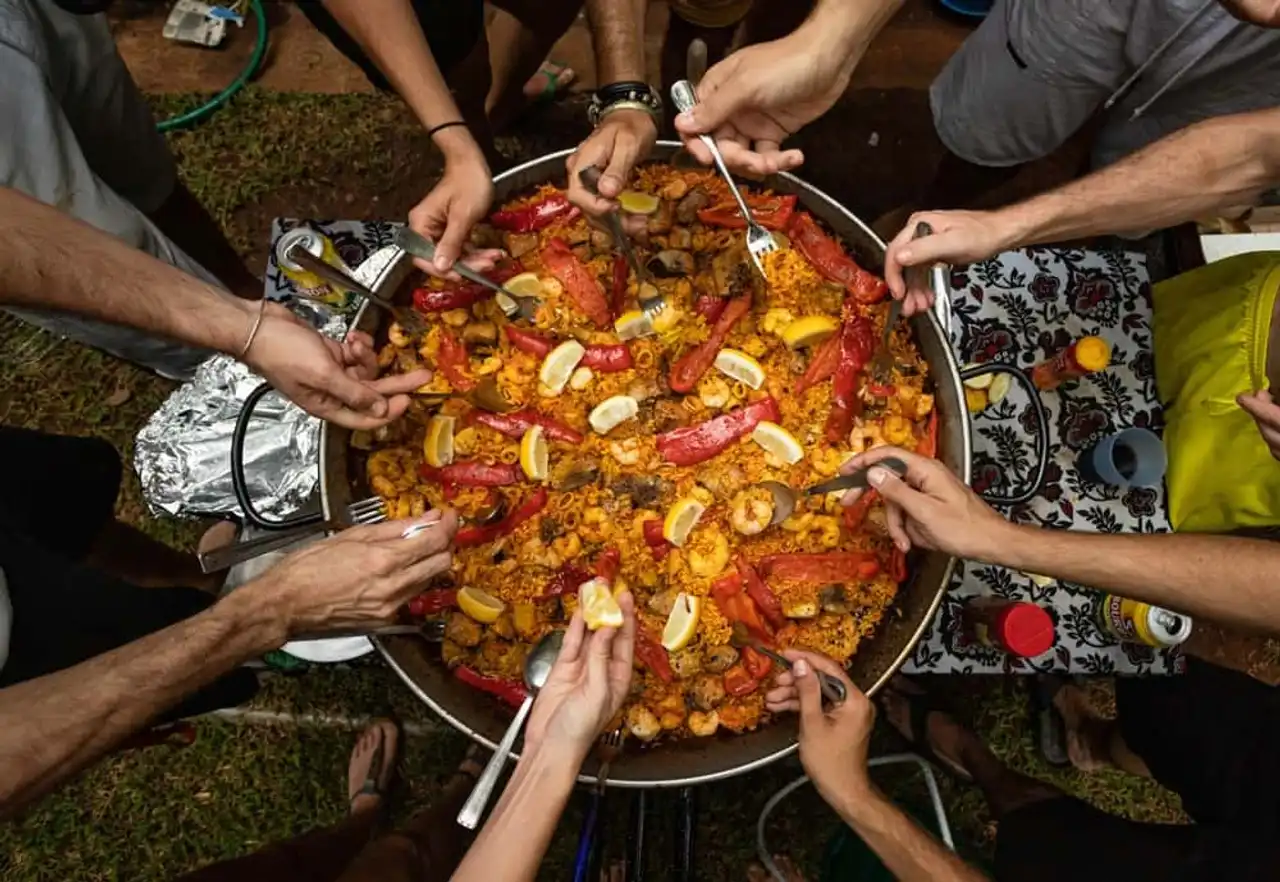
Photo credit: Shutterstock – Kolombo Castro
The ingredients of our "wood fire" recipe
For about 10 people (because the paella shares)
- 1kg round rice
- 500g of calamars
- 500g redt
- 300g St. James walnut
- 500g of supions
- 1 litre of mussels
- 15 gambas
- 1 chorizo
- 200g lardons
- 1kg peeled tomatoes
- 3 peppers
- Onion
- Safran
- Salt, pepper, spices
- Olive oil
The stages of our paella "in wood fire"
In a separate dish
- Heat olive oil
- Bring back calamars, supions and Santiago for 5 minutes
- Once golden, get out of the fire and set aside
In your stove on wood fire:
- Heat a good dose of olive oil
- Pepper, bacon, onions and chorizo for 15 minutes
- Add peeled tomatoes, mix well
- Add 1l of water and simmer 20 minutes (without covering)
- Incorporate your calamars, supions and scallops preparation
- Simmer for 15 minutes, then add spices and seasoning to your convenience
- Do not hesitate to wet your preparation
- Add redt, gambas, mussels, rice
- Leave on the fire carefully mix everything for 15 minutes
- When much of the water evaporated, get out of the fire
- Cover and simmer for 15 minutes
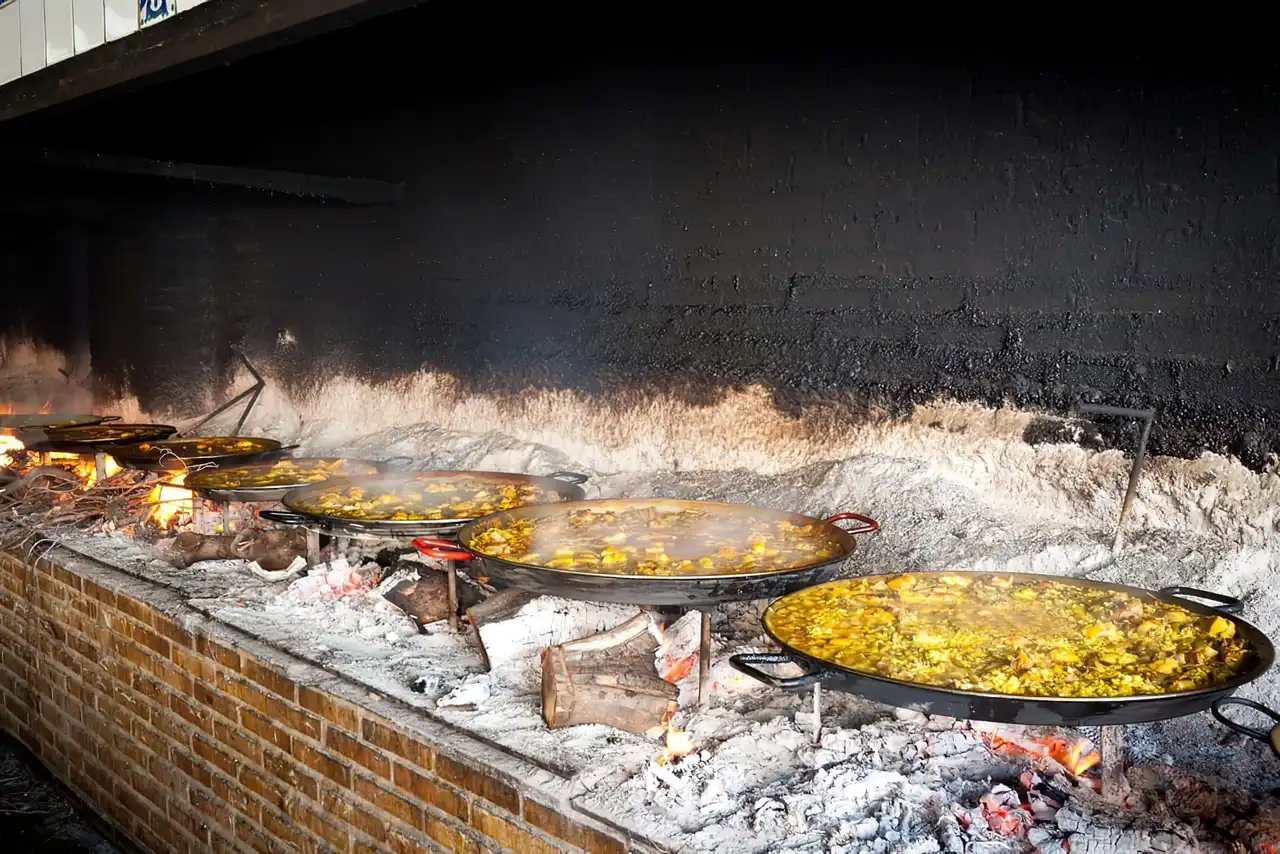




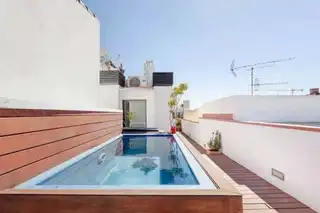
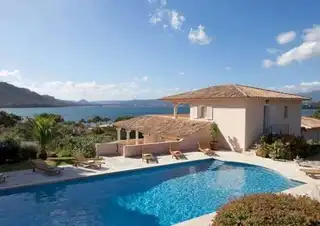
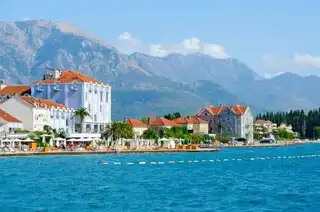
Loading comments ...